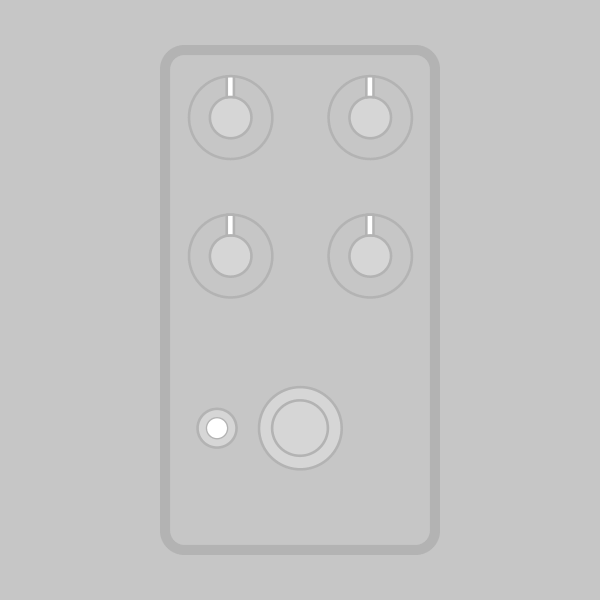
The L4 Bass Preamp is an adaptation of the preamp section of the Lab Series® L4 bass amplifier, originally released in late 1977, just a few months after the Lab Series L5 guitar amp hit stores. The L4 is a 200-watt head that was originally sold with a matching 2×15 cabinet, although most of them have since been separated from the original cabs.
While Lab Series was considered its own brand, the parent company Norlin also owned Moog, who was responsible for the design of the whole Lab Series lineup. The L4 and its single-channel sibling, the L2, used the L5’s circuit as a starting point for the preamp design.
The overall topology—in particular the tone controls, overdrive and limiter sections—are nearly identical to the L5, with tweaks to the frequencies to make it better suited for bass. The major departure was the addition of a low-noise input section for the second channel, designed specifically for passive bass guitars. The “Bright” switches on each channel have also been replaced with “Deep” switches to enhance the bass frequencies. The multifilter feature was also removed since it was designed to enhance upper frequencies that are less important for bass.
The L4 Bass Preamp project is nearly identical to the original L4 amp. The only substantial change we’ve made is to convert the input stage of channel 1 from inverting to non-inverting. This reduces the noise, but the way we’ve designed it, the input impedance and frequency response are exactly the same as the original amp’s “Lo” input (the higher-gain mode).
Channel 2 is unchanged except for one functional difference. The original amp used a complex arrangement of switching jacks to automatically configure the second channel in either low- or high-input mode depending on which input was used. We’ve converted this into an internal slide switch. You’ll almost certainly want to keep it in the higher-gain mode all the time, even if using an active bass, since this mode has much more gain available and can always be turned down as much as necessary—but this way the low-gain mode is at least still available if you want to use it.
We have also created an Interactive BOM tool for this project to help with the build process. Components are grouped by value, and you can click any component to see which other parts have the same value and where they’re located. (Chrome-based browsers only)